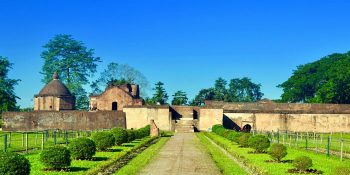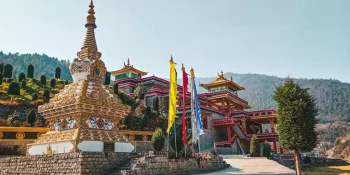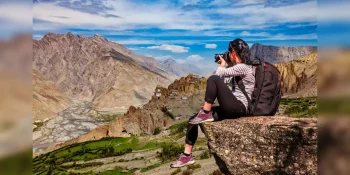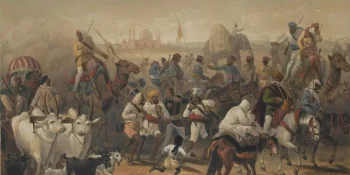The religious site of Allahabad, now known as Prayagraj, holds a sacred place in the hearts of millions of Hindus worldwide. Situated at the confluence of the Ganges, Yamuna, and mythical Saraswati rivers, it is believed to be one of the oldest cities in India, with a rich tapestry of history, mythology, and spirituality woven into its fabric.
Prayagraj’s significance stems primarily from its status as the site of the Kumbh Mela, the largest religious gathering on Earth. Held every twelve years, with smaller versions occurring every six years, and the Ardha Kumbh Mela every six years in between, this event attracts millions of devotees who come to bathe in the sacred waters of the confluence, seeking spiritual purification and blessings.
The city’s name, Prayagraj, translates to “place of sacrifice” in Sanskrit, underscoring its deep-rooted religious heritage. According to Hindu mythology, Lord Brahma, the creator of the universe, performed the first-ever sacrifice here, making it a site of immense spiritual significance. Additionally, it is believed to be the place where Lord Rama, the seventh avatar of the Hindu god Vishnu, spent time during his exile, further enhancing its importance.
Among Prayagraj’s most iconic landmarks is the Triveni Sangam, the point where the Ganges, Yamuna, and Saraswati rivers converge. This confluence is considered extremely auspicious in Hinduism, symbolizing the meeting of the three most sacred rivers in India. Pilgrims flock to the Triveni Sangam to take a holy dip, believing that it cleanses them of sins and bestows blessings for a prosperous life.
Another notable site in Prayagraj is the historic Allahabad Fort, built by the Mughal emperor Akbar in the 16th century. This grand fortress stands as a testament to the city’s diverse cultural heritage, blending elements of Mughal, Hindu, and British architecture. Within its walls lies the Akshaya Vat, a sacred fig tree believed to be immortal and associated with numerous mythological tales.
Prayagraj also boasts several revered temples that draw devotees from far and wide. The Hanuman Temple, dedicated to the monkey god Hanuman, is particularly popular, especially among those seeking strength, courage, and protection. The Mankameshwar Temple, dedicated to Lord Shiva, is another significant pilgrimage site, believed to fulfill the desires of devotees who offer prayers with sincerity.
Beyond its Hindu heritage, Prayagraj is also significant in other religious traditions. For Muslims, it holds importance as the birthplace of the revered Urdu poet Allama Iqbal, whose poetry continues to inspire millions around the world. Additionally, the city houses the iconic All Saints Cathedral, a symbol of the Anglican Church’s presence in India and a testament to Prayagraj’s religious diversity.
The religious fabric of Prayagraj is further enriched by its vibrant festivals and cultural celebrations. Beyond the Kumbh Mela, the city hosts numerous religious events throughout the year, including Diwali, Holi, and Eid, showcasing the harmony and unity among its diverse communities.
In recent years, efforts have been made to enhance Prayagraj’s infrastructure and amenities to accommodate the millions of pilgrims who visit during the Kumbh Mela and other religious festivals. Improved transportation, accommodation, and sanitation facilities aim to ensure a smooth and comfortable experience for visitors, further solidifying Prayagraj’s position as a premier religious destination in India.
In conclusion, Prayagraj, formerly Allahabad, stands as a timeless beacon of spirituality, drawing pilgrims and seekers from all corners of the globe. With its sacred rivers, historic landmarks, revered temples, and vibrant cultural heritage, it continues to inspire awe and reverence, reaffirming the eternal bond between humanity and the divine.









